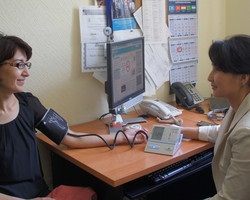WENZHOU, China – A groundbreaking five-year clinical study has revealed that spectacle lenses equipped with highly aspherical lenslets (HAL) can significantly slow the progression of myopia and axial elongation in children, offering a potential solution to the growing global vision crisis.
Published in the journal Eye and Vision, the study, conducted by researchers at Wenzhou Medical University’s Eye Hospital, demonstrated that HAL lenses reduced myopia progression by 1.75 diopters (D) and axial elongation by 0.72 mm compared to an extrapolated control group. This translates to a fourfold reduction in the risk of developing high myopia (−6.00 D or worse).
With projections indicating that nearly half of the world’s population will be myopic by 2050, the need for effective interventions is critical. Myopia, already affecting over 30% of the global population, is exacerbated by modern lifestyles, including increased screen time and reduced outdoor activity. In children, unchecked progression can lead to high myopia, significantly increasing the risk of severe vision impairments such as retinal detachment and glaucoma.
The study, which followed 43 children aged 8 to 13, utilized an innovative extrapolated control model to address ethical concerns in long-term pediatric trials. Results showed that myopia progression in the HAL group was −1.27 D, compared to −3.03 D in the control group. Axial elongation was 0.67 mm with HAL lenses versus 1.40 mm in the control group.
“Our results confirm HAL lenses as a viable long-term option for myopia control,” stated Dr. Jinhua Bao, co-lead author of the study. The lenses slowed myopia progression by 58% and axial elongation by 52%. Notably, only 9% of children in the HAL group developed high myopia, compared to 38% in the control cohort.
The extrapolated control model, validated against real-world data, offered a rigorous yet ethical approach to long-term pediatric research. The study also highlighted that the slowing of myopia progression became more pronounced over time, with younger children showing stronger responses. Safety profiles were strong, with no reported adverse effects.
While acknowledging limitations such as the modest sample size and reliance on modeled controls beyond two years, the study’s findings align with independent research, such as the LAMP trial on low-dose atropine, reinforcing its credibility.
Myopia expert Mark Bullimore, who was not involved in the study, commented on the novel extrapolated control design and emphasized the importance of assessing the cost-effectiveness of HAL lenses for real-world implementation.
Researchers are now looking to explore the synergy between HAL lenses and other interventions, such as increased outdoor activity, and to study real-world adherence patterns. HAL lenses, with their non-invasive design and ease of integration into standard vision care, have the potential to reshape public health strategies for myopia management.
More information: Xue Li et al, Myopia control efficacy of spectacle lenses with highly aspherical lenslets: results of a 5-year follow-up study, Eye and Vision (2025). DOI: 10.1186/s40662-025-00427-3
Disclaimer: This article is based on the provided research study and should not be considered medical advice. Readers should consult with a qualified eye care professional for any concerns regarding myopia or vision health. The results of this study may not be representative of all individuals, and further research is needed to validate these findings on a larger scale.












